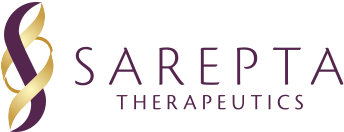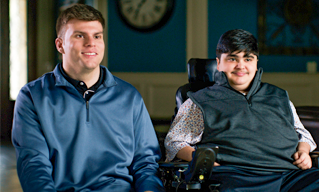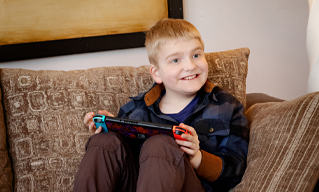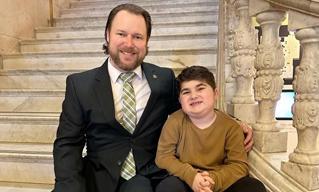Limb-girdle muscular dystrophy (LGMD) is an umbrella term for a group of inherited neuromuscular diseases. There are at least 34 LGMD subtypes, with significant variance in their symptoms and severity. Given the complexity of the different types of LGMDs, genetic testing plays a critical role in diagnosing a person’s subtype. However, many people with LGMD were diagnosed based solely on symptoms without genetic testing, and so they do not know their specific subtype. Genetic confirmation is important because it can facilitate earlier access to specialized care, potential clinical trial and natural history study participation and improved access to potential future treatments.
Sarepta is working to make the journey to LGMD diagnosis easier through accessible and affordable genetic testing, LGMD education and awareness for healthcare providers, and advocacy and outreach to the patient community. One such effort is the Sarepta LGMD Grant Award Program, which was created with the goal of enhancing participation in existing genetic testing programs. In 2022, Sarepta awarded four patient advocacy organizations a total of $100,000 in grants to support increased awareness and testing in the LGMD community.
We’re shining a spotlight on one of the organizations: Cure CMD, a U.S.-based advocacy organization dedicated to improving the lives of people affected by congenital muscular dystrophies (CMD). In this profile, we’ll hear from Cure CMD’s Executive Director Rachel Alvarez on the importance of genetic confirmation and how the Sarepta-supported “Creating pathways to LGMD diagnosis” initiative will positively impact the LGMD community.
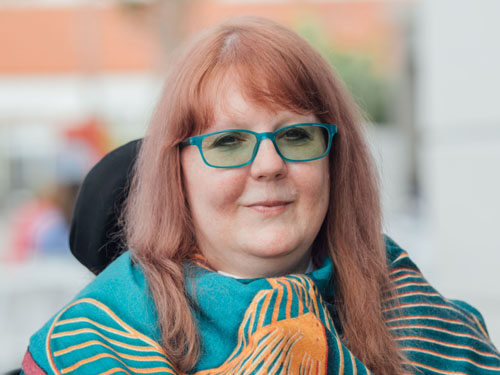
When it comes to advocating for genetic testing and genetic diagnosis in the LGMD community, Rachel Alvarez wears two hats: executive director of Cure CMD and a person living with an inherited neuromuscular disease.
As an infant, Rachel Alvarez was diagnosed with congenital muscular dystrophy, “not otherwise specified.” There was no reason to pursue a more specific diagnosis, her doctors said, because there were no treatments available. Her mother was told to take Rachel home and love her.
It wasn’t until Rachel was nearly 40 and experiencing respiratory failure that she underwent genetic testing and received genetic confirmation of her disease, an ultra-rare subtype. That genetic diagnosis enabled her to seek medical care more appropriate to her subtype and the knowledge gave her a sense of empowerment. Her diagnostic journey now inspires Rachel to educate others in the muscular dystrophy community about the importance of genetic confirmation. “Once I got my genetic diagnosis and started learning about my condition, it became clear that my role in this world was to make sure that nobody else had to go through a period of ignorance like I did,” she said.
I tell people genetic testing is the most important thing that you can do for your health today and for access to potential treatments in the future.
At Cure CMD, Rachel oversees efforts to identify the global population of people living with congenital muscular dystrophies and facilitate genetic confirmation. With the Sarepta grant, Cure CMD is launching a new initiative focused on creating pathways to genetic diagnosis for individuals living with LGMD. “People are told, ‘you have limb-girdle muscular dystrophy,’ but nobody tells them there are more than 30 types of LGMD. Nobody tells them that there's a gene involved that is going to be important to you when or if you need treatment,” Rachel explained. “I tell people genetic testing is the most important thing that you can do for your health today and for access to potential treatments in the future.”
Educating and empowering
At the heart of the new “Creating pathways” initiative is the Congenital Muscle Disease International Registry (CMDIR), the largest global registry of CMD-affected individuals. Cure CMD and partners created CMDIR back in 2009 to identify the CMD population for the purpose of raising awareness, sharing standards of care, and assisting the research and clinical community to find treatments and improve care. There are now more than 3,000 affected individuals from 86 countries registered.
A significant number of those registry participants have been diagnosed with LGMD, according to Rachel. With the LGMD Grant Award, Cure CMD will work to reach individuals in the CMDIR whose symptoms align with established symptoms related to an LGMD diagnosis but do not yet have genetic confirmation. The organization will also create new materials to reach undiagnosed individuals via additional channels (such as blogs and social media), sharing information about symptoms of LGMD and pathways to genetic testing.
People need to know that you have to have that genetic confirmation in order to be eligible for any study or trial that's coming up.
Through the year-long initiative, Cure CMD aims to help 100 people obtain genetic confirmation, thereby increasing the number of clinical-trial-ready individuals. “We will be sharing information about genetic testing opportunities, but also educating people about how important it is to get that genetic confirmation,” Rachel said. “People need to know that you have to have that genetic confirmation in order to be eligible for any study or trial that's coming up.”
Diane Berry, Sarepta’s chief global policy & advocacy officer, hopes that the initiative can deliver both education and a sense of empowerment to the LGMD community. “We understand that the path to diagnosis is often slow and frustrating. People who have been given a diagnosis based on their symptoms may find that the improved genetic testing panels of today, which are often free, can provide a definitive diagnosis,” she said. “We are in an age of genetic medicine, and if it is possible to know your genetic diagnosis, a different set of healthcare choices may be in front of you."
- Learn more about the LGMD Grant Award Program at Sarepta.com/lgmd-grant-award-program
- Learn more about LGMD subtypes and genetic testing programs at limbgirdle.com/genetic-testing
